When brewer and merchant Matthew Vassar established Vassar College in 1861 as a philanthropic project, nearly all of campus life was centered in one building. This “great lumbering pile of brick and mortar,” as the college’s first president, John Raymond called it, was designed by James Renwick, Jr. in the style of the Tuileries Palace in Paris. Its sheer bulk and majesty embodied the institution’s lofty aim: to provide an education for women that rivaled that of the then-all-male Ivy Leagues. As the school expanded over the decades, going co-ed in 1969, more than 100 buildings have joined the campus assemblage, radiating outwards from the “Main Building” across the college’s thousand-acre property on the outskirts of Poughkeepsie, New York. With contributions from Marcel Breuer, Eero Saarinen, I.M. Pei, and others, Vassar’s architectural collection represents a rich legacy of institutional design, though one traditionally contained within the stone wall surrounding the campus. The school’s latest addition signals a commitment to the world beyond that enclosure.
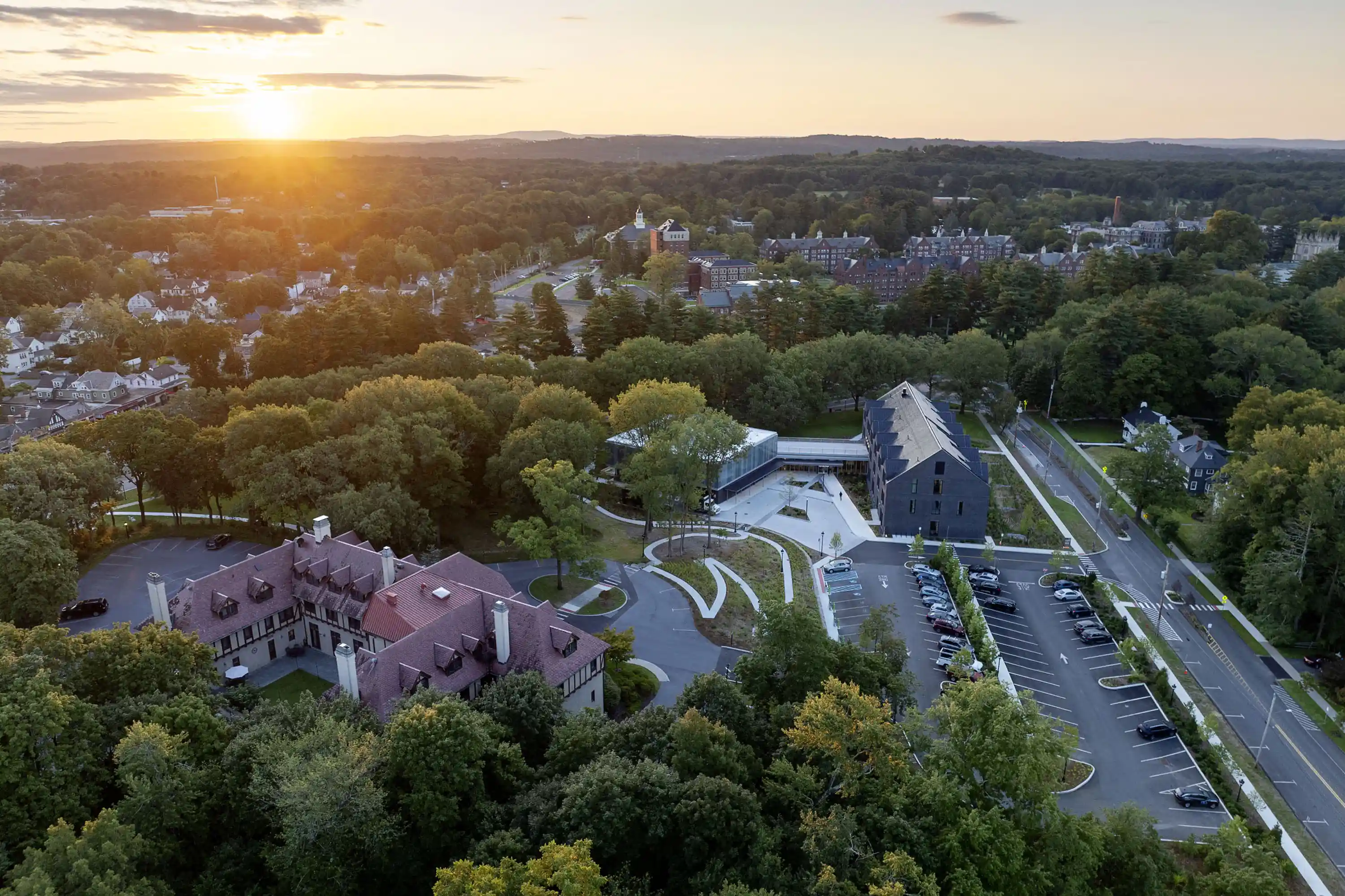
The Vassar Institute of Liberal Arts, located just off Vassar's campus, with the 1924 Alumnae House in the foreground. Photo © Jeremy Bitterman, courtesy Frederick Fisher and Partners
Located just across the road from Vassar’s imposing main gate, the unique building, designed by Frederick Fisher and Partners (FF&P), combines three distinct programs: the headquarters of the newly established Vassar Institute for Liberal Arts; a 50-room hotel; and a restaurant and bar. The 48,000-square-foot project shares its corner site with the Alumnae House, a half-timbered Tudor Revival-style guesthouse and commons built in 1924 that offers a campus precedent for the new building’s blend of hospitality and academic spaces. The Institute’s inauguration marked the 100th anniversary of the Alumnae House, and the college intends for the project to continue the convivial mission embodied by the older building while expanding Vassar’s broader goals. The Institute, which will host visiting scholars for conferences, workshops, and events, aims to widen the scope and impact of the liberal arts, with an emphasis on entrepreneurialism and community engagement. “We had to connect different viewpoints and very different demands,” says Fred Fisher, founding principal of FF&P, which has been working on the project for more than seven years. “In the end, the building became both a gateway and frame for the Alumnae House.”
The Institute is divided into two distinct volumes, connected by a ground-level lobby with floor-to-ceiling glazing and topped by a rooftop deck. The three-story hotel, clad in dark gray reflective brick, faces a residential side street, its gabled roof and demure facade designed in scale and dialogue with neighboring houses. On the building’s opposite, campus-facing end, the glass-enclosed Institute headquarters caps The Salt Line, a farm-to-table restaurant, on the ground floor, and more closely toes the line of contemporary institutional architecture. "Each volume speaks to different constituents simultaneously—to the local community, academics and students, and the guest coming to visit the school for the first time," says FF&P partner Matthew Kelley, who leads the Los Angeles-based firm's New York office. Landscaping by Nelson Byrd Woltz connects the new building via winding paths to the Alumnae House (which sits on a hill to the direct northwest), drawing inspiration from the Olmsted firm’s early interventions in Vassar’s campus design.
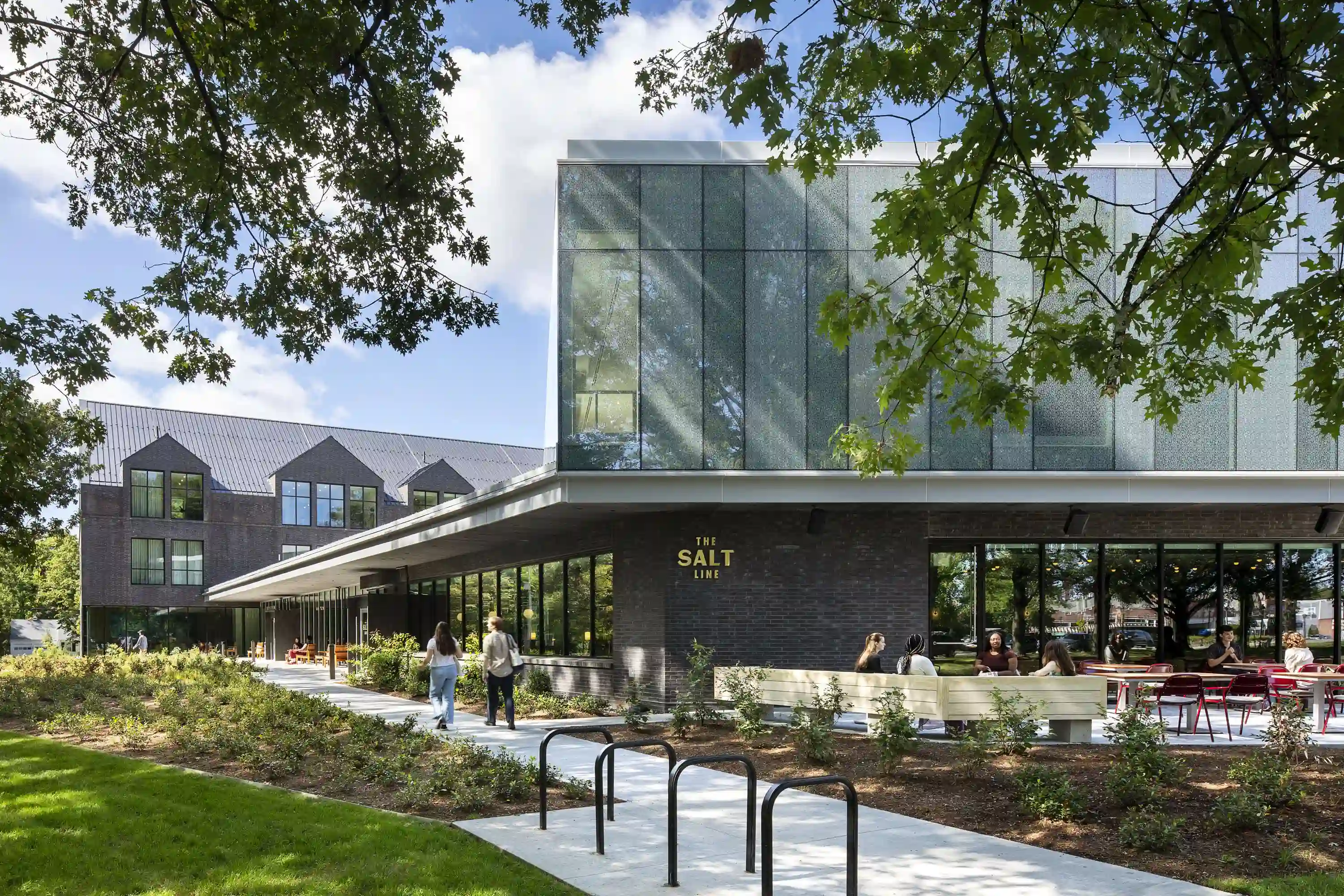
The Institute's two distinct volumes are connected by a ground-level lobby. Photo © Jeremy Bitterman, courtesy Frederick Fisher and Partners
For the connective lobby, FF&P aimed for a living room-style atmosphere. Filled with couches and tables, the space is flanked by the hotel reception desk on one side and the entrance to the Salt Line on the other. The light-filled Institute, which contains multiple conference rooms and gathering spaces, can be accessed via an enclosed stairway, adjacent to the restaurant’s doors. The interiors of the hospitality spaces, executed by L.A.-based Commune Design, evoke the ambience of a quirky bed and breakfast more than the arm of an elite institution. On display throughout the building are more than 200 works by Vassar alum and artists with Hudson Valley connections, selected by the staff of the campus museum. The centerpiece is Mark Dion's The Vassar Atheneum, a commissioned work that features custom-made cabinets displaying items from the college's archives and material culture. Located in the lobby, just past the hotel’s reception desk, the work creates a unique, semi-enclosed conversation space. Another significant installation is Julia Whitney Barnes's The Botanist's Mural, a room-sized work in the hotel's second-floor lounge that incorporates 63 plant specimens from Vassar's historic Herbarium collection.

1
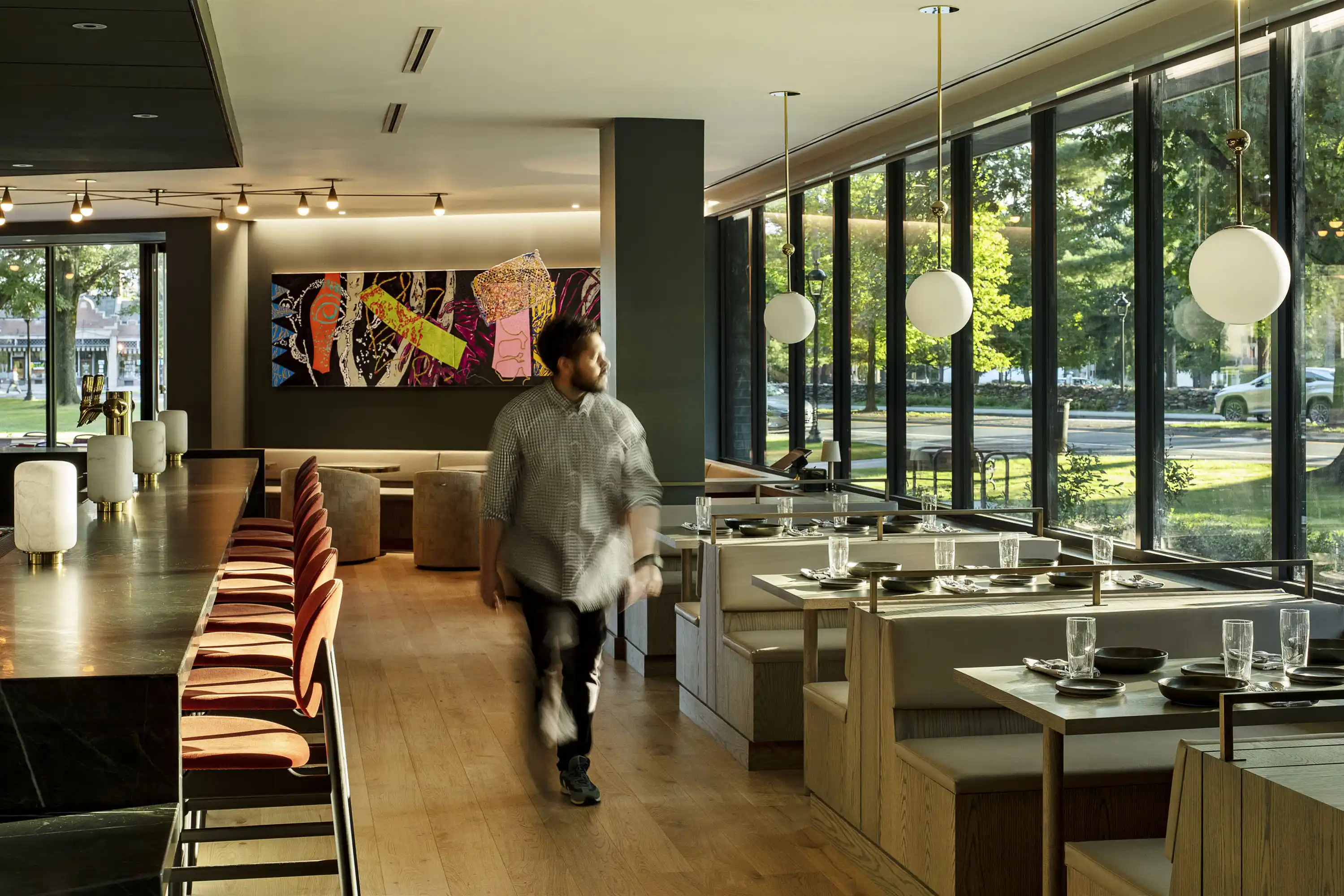
2
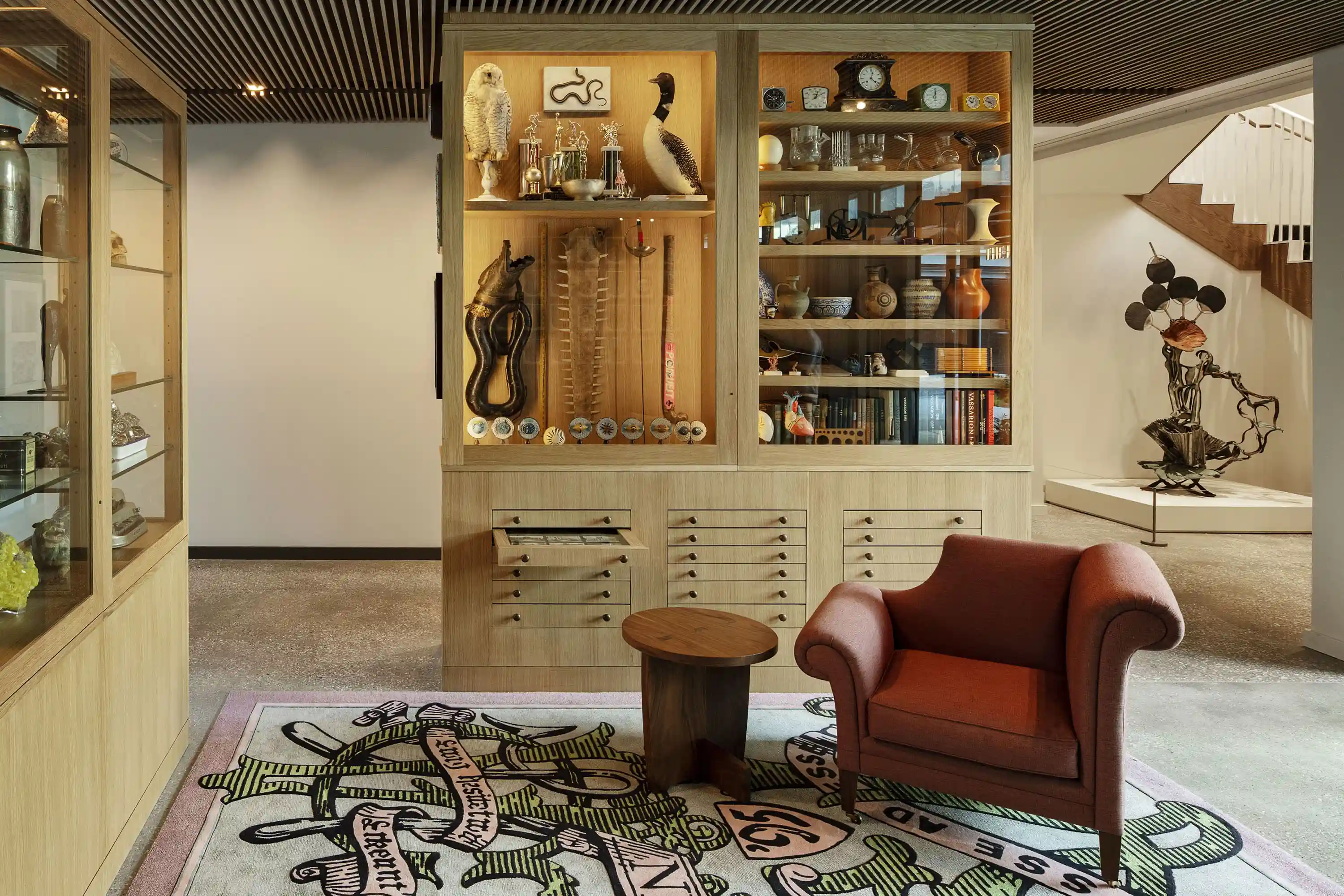
3
A view of the lobby (1) facing entrances to the Institute headquarters and the Salt Line Restaurant (2); Mark Dion's The Vassar Atheneum , which is tucked behind the reception desk at the lobby's other end (3). Photo © Jeremy Bitterman, courtesy Frederick Fisher and Partners
Though the Alumnae House informed the project’s overall program, FF&P shied away from any direct reference to its traditional interiors. Still, the Institute’s glazing is marked by a custom pattern inspired by geometries found in the older structure’s half-timbering. The ceramic fritting, which is permanently baked onto the glass, improves glass shading performance while also making the facade bird friendly. The new building also aligns with custom sustainability goals developed by the school, incorporating geothermal heating and cooling and using photovoltaic solar panels and solar thermal heating panels on the hotel roof to operate net-zero and fossil fuel–free.

4
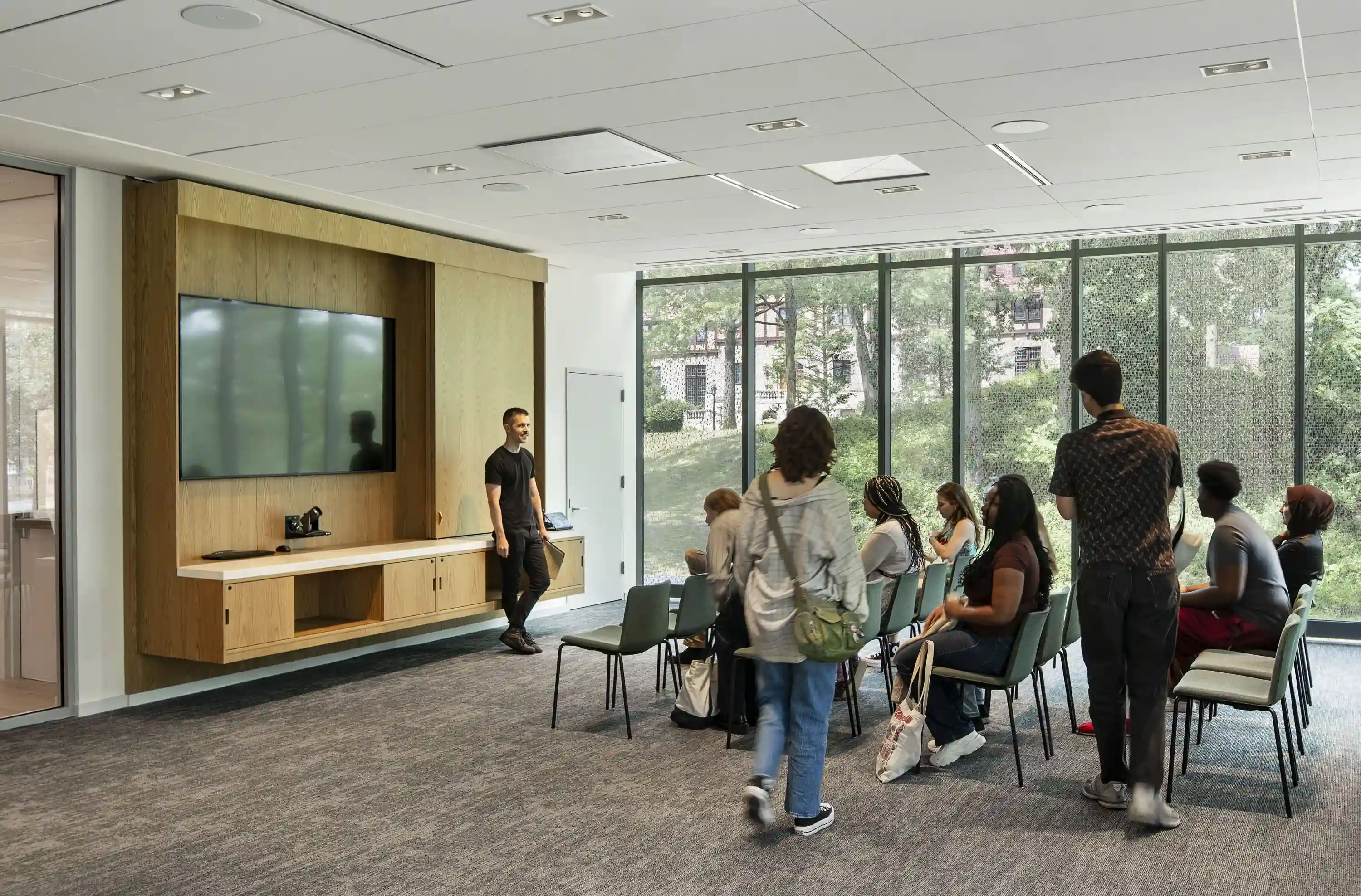
5

6
The Institute headquarters features conference rooms and gathering spaces (4&5); a ground-floor "snug" for students, faculty, and guests to work or convene (6). Photo © Jeremy Bitterman, courtesy Frederick Fisher and Partners
The Institute will host visiting scholars from around the world for its "signature programs," which include conferences and long-term initiatives. Upcoming events include a multi-day workshop exploring educational inequities in Poughkeepsie, and a seminar exploring the reciprocal relationship between humans and sound in nature. Vassar president Elizabeth H. Bradley used the term “architectural diplomacy” when describing the relationship between the new building and the Institute’s broader goals. “We’ve talked about this initiative as a way to bring difference together, and bridge academia with the real world,” she told RECORD. “The architecture is essential to bringing this new vision to life.”
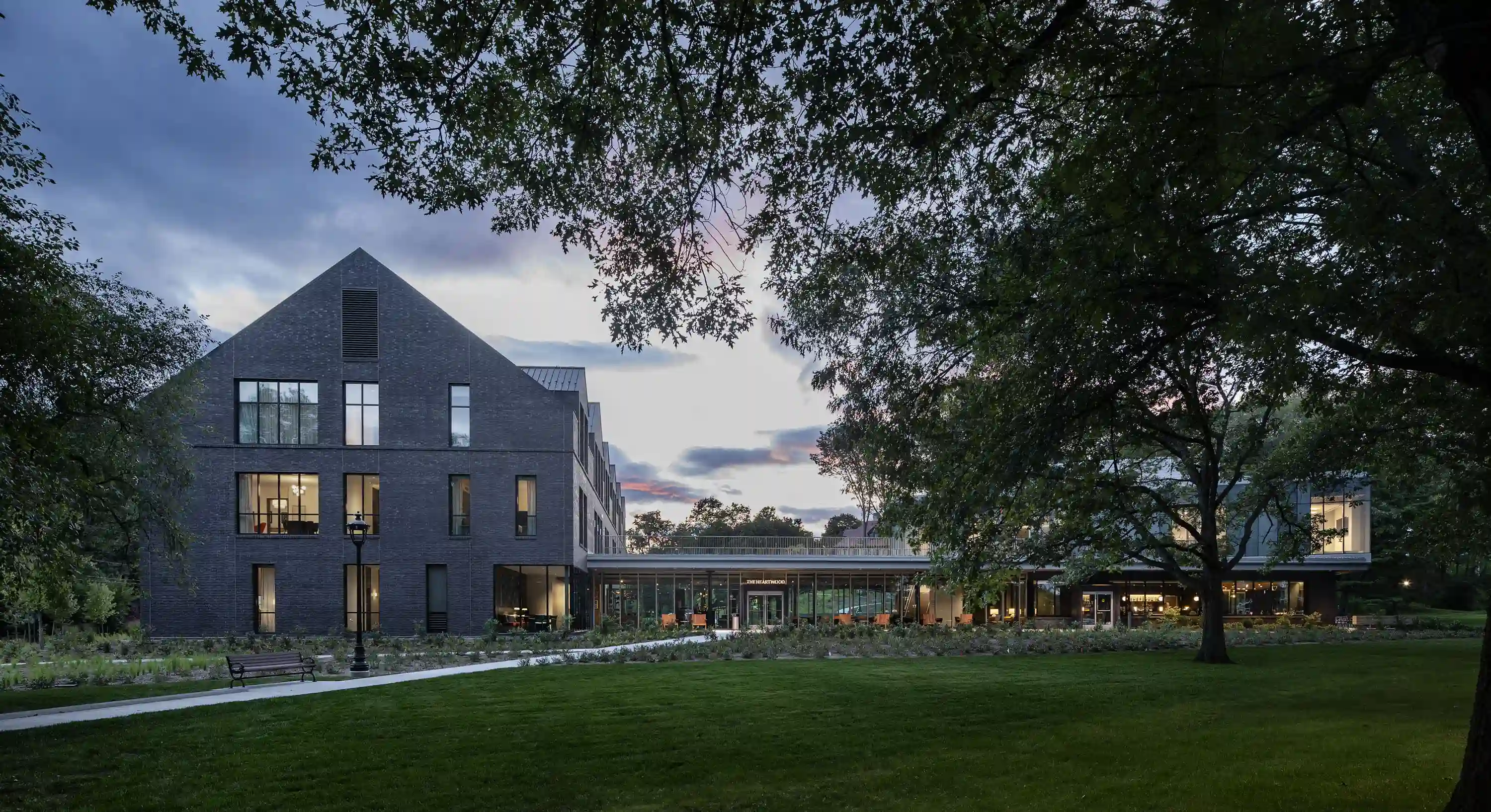
Photo © Jeremy Bitterman, courtesy Frederick Fisher and Partners






